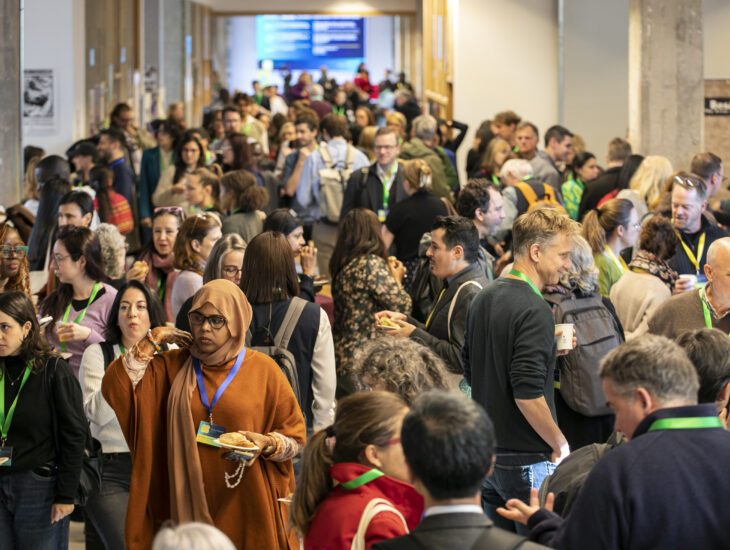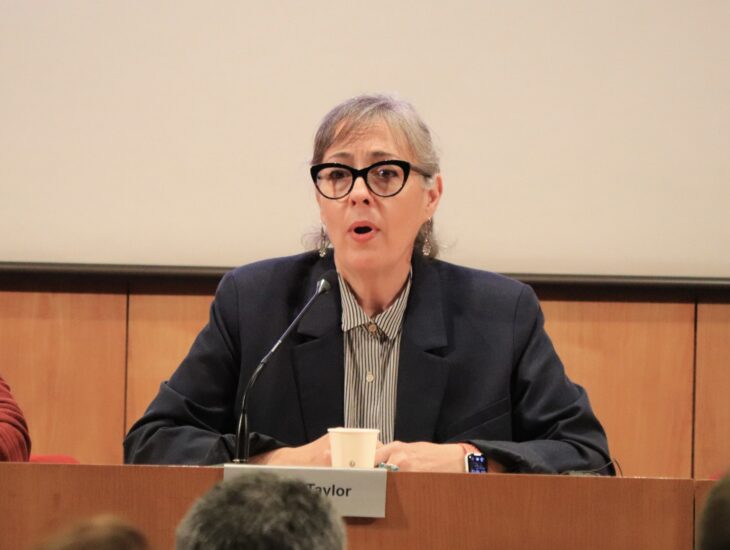“The Havana Peace talks between the Colombian government and FARC are a welcome step ahead towards a transition in the country, but Colombia’s problems reach far beyond this issue and are not on the agenda at the negotiating table.” It is with this critical viewpoint that Luis Jorge Garay expresses his opinions on the subject, being one of the most well-known Colombian economists and an expert in the political and social reality of the country, in the “Assessment of a year of negotiations in Havana” conference, held on Thursday 17th of October in Barcelona and organised by ICIP, Fundació UB Solidaritat and Colombia en Pau.
Garay’s theory about present-day Colombia is clear: the traditional conflict – as he defines the guerrilla conflict of FARC – is only one of many conflicts in Colombian society. “It is not the only one – he insists – and it is becoming less and less important”. He adds that “There are many examples of systematic violence, promulgated by power groups, legal and illegal, which are fruit of a culture of illegality: drug trafficking, contraband, illegal mineral markets, etc…” Illegalities which, according to Garay, are also present in institutions, where pacts are set up between congress members and paramilitaries involved in drug trafficking, as well as within relations between the State and powerful classes: “There are external, non-state powers, unrelated to the guerrilla, that prove an obstacle to any social or political advancement in the country.”
Furthermore, the economist states that 30% of the FARC’s militancy have no interest in distancing itself from drug trafficking and will not disband, despite the Havana process. “This 30% will continue to operate on the ground, maintaining an alliance with international mafia organisations and will continue to be a focus of violence. They will not retain the name of FARC; they will adopt a different label, but they will continue to operate as illegal armed groups.”
Yet another significant element proves an obstacle in the transition towards a democratic Colombia: the fight for land and territory, which has become a central issue in the succeeding episodes of violence during the past few years. In this sense, Garay warns of a phenomenon that increases the risk of poverty and marginalisation of Colombian peasant farmers: the buying or acquisition of land by foreign capital (mostly from emerging economies), and the mass accumulation of land, which inevitably leads to financial speculation.
Garay believes that Colombia must move towards a model of rural development linked to the territory, which recognises the peasant farmer as being a rural actor and that permits the improvement of living conditions. A model, however, Garay himself recognises that neither the State nor the Elites are interested in implementing, and as such, is not on the agenda in Havana.
Finally, Luis Jorge Garay avoids speaking about a peace process in Colombia: “achieving an agreement on the disbanding of the guerrilla is useful for a transition process towards peace, but peace itself is built with markedly different social processes.”
22.01.2013




